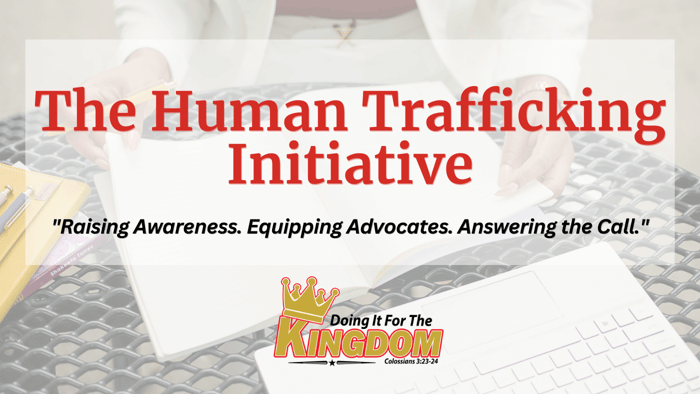Table of Contents
Behind the Algorithm: How Social Media Fuels Human Trafficking
 In a hyper-connected world, social media platforms have become a breeding ground not just for connection and creativity, but also for criminal activity—including human trafficking. Traffickers are increasingly turning to platforms like Instagram, Facebook, TikTok, Snapchat, and gaming chats to recruit, groom, and exploit victims. While these platforms are designed to bring people together, their algorithms and lack of safeguards often make it easier for predators to thrive in plain sight.
In a hyper-connected world, social media platforms have become a breeding ground not just for connection and creativity, but also for criminal activity—including human trafficking. Traffickers are increasingly turning to platforms like Instagram, Facebook, TikTok, Snapchat, and gaming chats to recruit, groom, and exploit victims. While these platforms are designed to bring people together, their algorithms and lack of safeguards often make it easier for predators to thrive in plain sight.
This blog post explores how social media contributes to modern-day slavery, what red flags to watch for, how organizations are equipping communities to respond, and how you can join the fight through awareness, prayer, and action.
The Digital Recruitment Pipeline
According to the Polaris Project (2024), nearly 42% of sex trafficking cases in the United States last year involved online recruitment. Social media makes it easy for traffickers to access a vast pool of vulnerable individuals with minimal effort.
How it works:
Traffickers create fake profiles to pose as peers, influencers, or romantic partners.
They initiate contact through direct messages (DMs), comments, or reactions.
Grooming starts subtly: compliments, flattery, promises of opportunity, or emotional support.
Eventually, the trafficker isolates the victim emotionally or geographically, leading to exploitation.
Traffickers are also known to use apps that allow disappearing messages or anonymous chatting, making it harder for parents or guardians to detect harmful conversations. In some cases, victims are encouraged to send explicit photos, which are later used for blackmail or coercion.
Why Social Media Is the Perfect Storm
1. Anonymity & Accessibility
Traffickers can hide behind fake accounts, change identities quickly, and access millions of users, especially minors, with little to no verification.
2. Algorithmic Exposure
Social media algorithms track user engagement and push similar content. If a teen interacts with content related to loneliness, body image, or risky behaviors, the platform may begin showing them posts that increase vulnerability, including contact from predatory accounts.
3. Normalization of Exploitation
Trends on TikTok and other platforms often blur the lines between empowerment and exploitation. Many teens are unaware they are being groomed when their online interactions feel like friendship or romantic interest. Popular culture sometimes glamorizes hyper-sexualization, making it harder to recognize manipulative behavior.
4. Lack of Oversight and Regulation
While some platforms have policies to report suspicious activity, enforcement is inconsistent. Private messaging systems and encrypted apps make it easy for traffickers to move undetected. Content moderation teams are often overwhelmed or undertrained to recognize trafficking-related behavior.
Real-Life Stories
In 2023, a 14-year-old girl in North Carolina was lured through Instagram by someone pretending to be a modeling scout. Within weeks, she was trafficked across state lines before being rescued by law enforcement. Her story is not uncommon.
According to Equality Now’s 2024 report, online sexual exploitation is one of the fastest-growing forms of trafficking globally. Traffickers are leveraging live streaming, OnlyFans-style platforms, and encrypted apps to operate with alarming ease. Victims are often too ashamed or afraid to come forward, especially if they’ve been manipulated into sharing compromising images or videos.
Red Flags to Watch For
Being proactive can save lives whether you're a parent, mentor, teacher, or church leader. Here are some signs a person may be targeted or groomed online:

Sudden or secretive online friendships with unknown or older individuals
Isolation from family and friends or new, unexplained behavioral changes
Unexpected gifts, cash, or expensive items
Excessive time spent online, especially late at night
Expressing interest in vague job offers or “modeling opportunities”
Becoming increasingly private about digital communications
The Role of the Church and Faith Communities
Faith communities play a vital role in prevention and healing. The Church can be a source of education, intercession, and support for survivors and at-risk individuals.
Host workshops for youth, parents, and ministry teams on online safety and human trafficking.
Offer pastoral counseling or prayer sessions specifically focused on spiritual and emotional recovery from exploitation.
Train volunteers and staff in trauma-informed care to recognize signs of online grooming and abuse that can lead to human trafficking.
Collaborate with Christian mental health professionals to provide referrals for survivors and their families.
Scripture calls us to “Rescue the weak and the needy; deliver them from the hand of the wicked.” (Psalm 82:4). That calling includes engaging with the digital realities of our day.
Trusted Organizations Offering Support and Education on Online Safety and Human Trafficking
Numerous organizations are working to address online-facilitated trafficking and provide tools to the public:
Polaris Project: This organization maintains the National Human Trafficking Hotline and offers in-depth research on trafficking trends and online recruitment. Its website offers free toolkits and survivor-informed training.
Shared Hope International: Offers educational materials, advocacy tools, and survivor-centered support focused on prevention and restoration.
National Center for Missing and Exploited Children (NCMEC): This organization offers cyber safety tips and reporting resources for suspicious online behavior that can lead to human trafficking. It also runs NetSmartz, an internet safety program for kids and parents. They provide a robust of education and support in various ways.
Equality Now: Publishes international reports and campaigns to hold tech companies and governments accountable for online exploitation.
These organizations offer free webinars, downloadable guides, and reports you can use to stay informed and equip your family or ministry.
How You Can Help
1. Educate Yourself & Others
Knowledge saves lives. Attend webinars, read recent reports, and share credible information with your community. If you're an education, counseling, or ministry professional, consider continuing education specific to cyber-trafficking.
2. Set Boundaries & Safety Nets
Use monitoring tools on devices used by minors. Encourage youth to talk openly about their online interactions. Avoid shaming language and foster trust.
3. Partner with Purpose
Support organizations like Doing It for the Kingdom that are working to prevent trafficking and restore survivors through faith-informed education and advocacy.
Invite experts to speak at your events or youth nights. When appropriate, provide space for survivors to share their stories in safe and supportive environments.
4. Pray with Precision
Your prayers matter. Pray for:
Hidden trafficking rings to be exposed
Victims to be rescued and restored
Traffickers to be held accountable
Technology companies prioritize safety over profit
Ministries and nonprofits working on the front lines
5. Join Our Community
Want to stay informed and engaged with how faith and advocacy intersect in the fight against human trafficking?
Join our email list to receive:
Monthly updates
Invitations to upcoming workshops and events
Follow our organization's journey as we grow
Together, we can build a community of believers committed to doing justice, loving mercy, and walking humbly with God in digital and real-world spaces.
Final Thoughts
The algorithm doesn’t have the final say—God does. We are not powerless in this fight. With discernment, strategic action, and anointed awareness, we can disrupt the digital pathways traffickers use and build safer online spaces for future generations.
Let us be the light in a digital world that is too often cloaked in darkness. Your vigilance, your voice, and your partnership matter.
Visit our website to learn more about Doing It for the Kingdom and join the mission to end trafficking through faith, advocacy, and education.
FAQs
1. How do traffickers use social media to find victims?
Traffickers often create fake accounts to impersonate peers, influencers, or recruiters. They initiate conversations through DMs, comments, or reactions and use emotional manipulation to build trust. Once a relationship is formed, they may isolate the victim and introduce false opportunities or coercion, leading to exploitation. Some traffickers also use disappearing message apps or encrypted chats to hide their activity.
2. What are some signs that someone I know might be getting groomed online?
Warning signs include secretive behavior about online activity, sudden emotional changes, new friendships with unknown or older individuals, receiving expensive gifts or money, and a growing interest in vague “job” or “modeling” opportunities. Victims may also withdraw from trusted friends or family and become protective of their digital communications.
3. What should I do if I suspect someone is being trafficked online?
If you believe someone is being trafficked or groomed, contact the National Human Trafficking Hotline at 1-888-373-7888 or text “HELP” to 233733. If you know the person personally, approach them with compassion and without judgment. Provide support, and if appropriate, help them access professional or spiritual care.
4. How can I protect my children or students from online exploitation?
Begin by fostering open communication about online safety. Use monitoring tools or parental controls and teach children never to share personal information or photos with strangers. Regularly check their privacy settings and encourage conversations about their digital lives without fear of punishment or shame. Involve them in workshops and faith-based programs that promote discernment and identity rooted in Christ.
5. How can I stay connected and support this mission long-term?
Join our email list to receive monthly updates, prayer points, survivor stories, and opportunities to get involved. You’ll gain access to upcoming events, workshops, and resources that equip you to help prevent trafficking and support survivors. You can also donate, partner with us in outreach, or become a Kingdom Justice Partner to share your voice and expertise.


